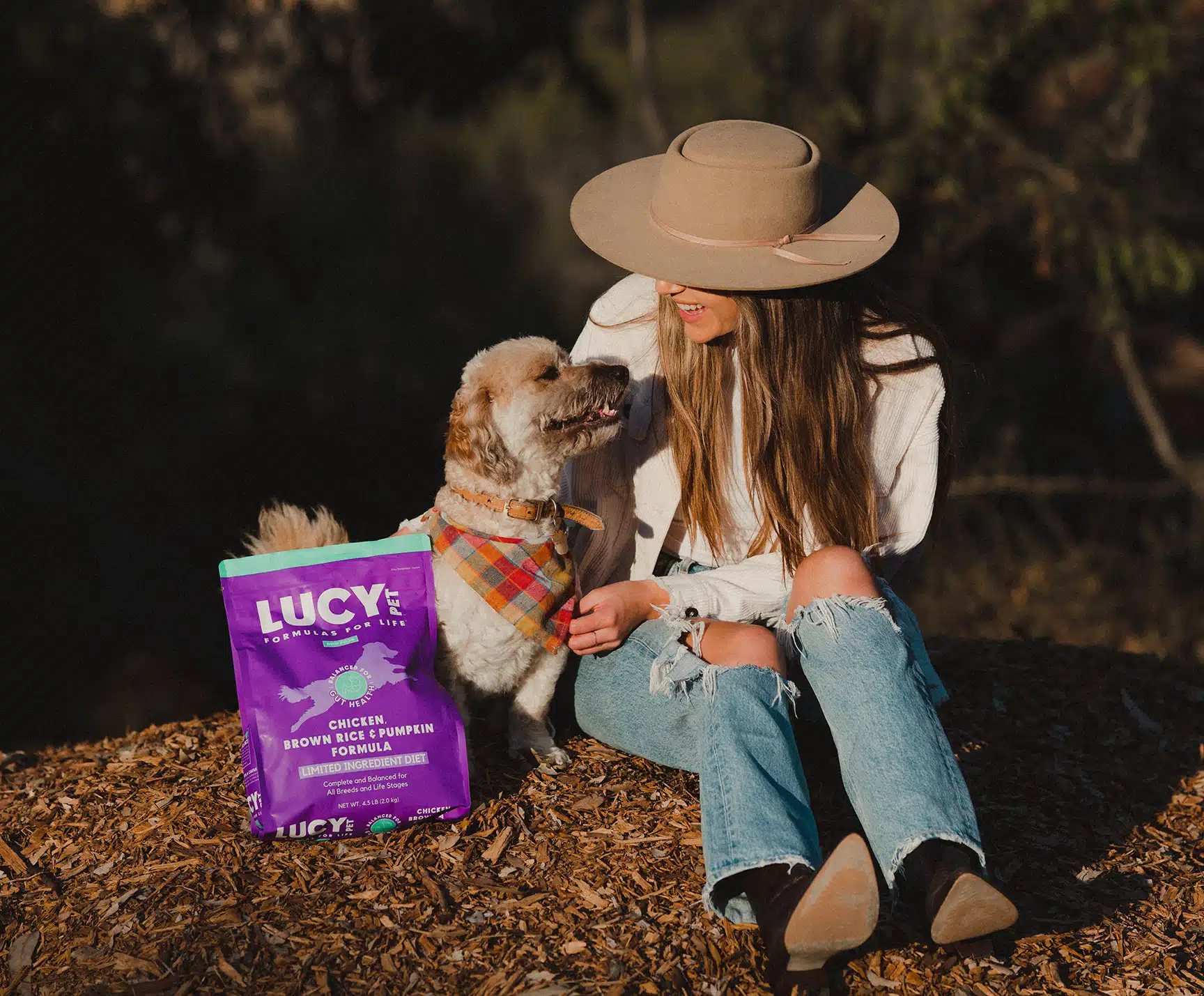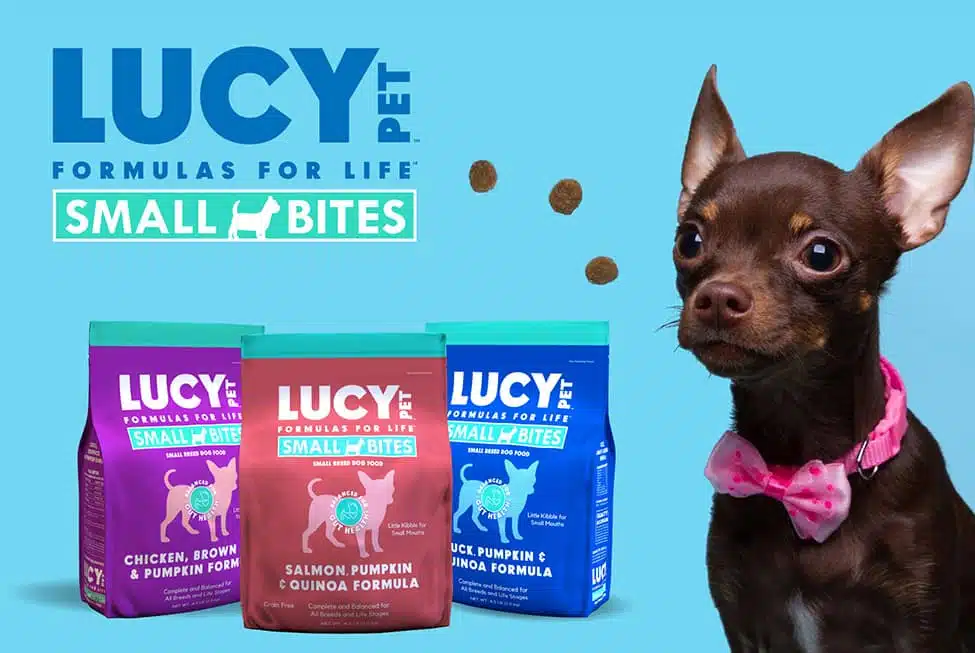
The Dog Digestive System
A dog’s digestive tract consists of many similarities to our own. The functional organs—tongue, esophagus, stomach, small and large intestine—play equally important roles in the proper breakdown and absorption of nutrients in dogs as they do for people. Although many pet owners barely understand the basics of their own digestion much less that of a dog digestive tract.
However, it’s crucial to understand how dog digestion works when choosing the right pet food or when offering little bites of food. When it comes to your dog’s immune health, most people know to avoid common toxic foods like chocolate and certain nuts. But is that piece of raw chicken okay for them to eat? And how do you ensure your dog receives all the nutrients it needs for a long and healthy life? To answer these questions and learn more about the dog digestive system, read on.
Carnivores, Omnivores, and Herbivores
Before laying out the function of the individual organs, it’s easier to look at the digestive system as a whole. Carnivores, omnivores, and herbivores have different tracts that allow for the breakdown of different foods.
- Carnivores – Because meat is easily digested and rich in nutrients, true carnivores have short digestive tracts. Carnivores have incisors and canine teeth designed for killing prey and tearing muscle, with less emphasis on chewing.
- Omnivores – Humans, pigs, bears, and other omnivores eat both plants and animal flesh. They typically have a longer digestive tract, in line with those of herbivores and less acidic stomachs than carnivores. They can also have incisors and canines for biting and tearing but will also have premolars and molars for crushing and grinding.
- Herbivores – Only eating plant matter, herbivores have no need for incisors or canines. They eat seeds, leaves, and fruits by grinding their molars. Most herbivores have some form of a vat in their digestive tract where bacteria break down the plant cell wall, providing additional nutrients.
Dogs Are Omnivores
You might think dogs are carnivores due to their strong up-and-down jaw and that they’re part of the order Carnivora. However, pandas also belong to this order, and they eat nothing but bamboo all day!
There’s a lot of misinformation with regards to digestion for dogs (humans too for that matter, but that’s for another article.) One of the biggest errors is mistaking ancestry as an indicator for the current genome. In this case, people will point to wolves, the ancestor of dogs, as proof that dogs are carnivores and therefore should be able to survive off meat alone—raw meat, like a true carnivore. But dogs are equally prone to illness and disease from raw meat the same as humans.
Over the roughly 12,000 years of domestication, dogs’ genes changed. According to a study published in Nature, as dogs split from wolves, there were roughly 36 genomic regions that altered and contributed to their domestication.
- Brain Function – There are 19 genomic regions that relate to brain development and function that differ between wolves and dogs. Eight of these specifically target the nervous system, which controls and develops behavior. A labradoodle and wolf, although 99% similar in genetic structure, are quite different temperamentally, to say the least.
- Gut Function – Other genomic regions specifically influenced what dogs could digest. Dogs have an increased ability to digest starch, and studies suggest early ancestors of what we consider modern dogs thrived on a starch-heavy diet.
While dogs were starting to become domesticated temperamentally, they were also transitioning to an omnivore diet. It’s hard to determine which influenced which, or if they changed simultaneously. Regardless, the dog digestion process has dramatically changed since its ancestors.
Dog Digestion Process
There are three stages to the dog digestion process, each with its own important function.
- Ingestion
- Digestion and Absorption
- Elimination
Ingestion
Watching a dog scarf down their meal is a phenomenon you can’t help but stare at. You wonder at what point they breathe and if they’re even chewing the food. You might even be inclined to slow your dog’s consumption down, thinking they’re going to choke. These are all natural thoughts that speak to the differences between human and dog digestion.
For one, there’s the difference in saliva. In humans, saliva contains amylase, an enzyme that starts the breakdown of starches, and lipase for breaking down fats. These are not found in dog mouths. Instead, all of their digestive enzymes are waiting in the stomach, making chewing and “slowing down” pointless for your dog’s digestion.
Digestion and Absorption
The digestion and absorption process involves the breaking down of proteins, carbohydrates, and fats into their core molecules to be absorbed. Most of the key organs are involved in this process, including:
- Stomach
- Small intestine
- Pancreas
- Liver
- Large intestine
Stomach
The stomach is the first stop for the half-chewed sludge to enter. Here, all the necessary digestive enzymes work to break down the food in order to be absorbed. The stomach has three roles in a dog’s digestive process.
- Churning – The stomach walls are muscular and contract in a rhythm that rolls the food around to keep it mixing and dissolving. Peristalsis is the term for the muscle contractions and relaxations that allow for food to be digested.
- Mixing – As this churning is happening, enzymes, mucus, and hydrochloric acid are mixed with the food to aid in the food’s breakdown. The acid found in dogs’ stomachs can be up to 100 times stronger than humans. This allows for raw bones to break down over time. The enzymes consist of proteases for proteins, amylase for carbs, lipase for fats, and cellulase for vegetables and fibers. Lastly, the mucus is there to help protect the stomach lining from the acid.
- Regulating flow – The last role the stomach has is to regulate the flow of nutrients through the stomach and into the small intestine. The sludgy mush of food that passes through the pyloric sphincter—the “regulator valve” of the stomach—is called chyme. As the chyme slowly passes, the stomach continues to churn and digest to ensure the food is thoroughly mixed and ready.
Small Intestine
The small intestine is the long thin tube where most of the nutrient absorption happens. More enzymes add to the mixture as well as sodium bicarbonate from pancreatic juices to help neutralize the chyme.
As the mixture pushes through and against the walls of the small intestine, nutrients are absorbed through small pores that lead to the bloodstream. This happens through the entire length of the small intestine, which in terms of surface area, is roughly the size of a small room. Compared to wolves, a dog’s small intestine is significantly larger.
Pancreas
While the pancreas is actually a gland, not an organ, it plays a major role in the digestion of food. The two major functions are to secrete enzymes into the stomach and small intestine throughout digestion and to release hormones into the blood. Insulin is one of the key hormones that help regulate blood glucose levels while digestion is taking place.
Liver
The liver produces bile, which contains salts that help with the digestion of fat and absorption of fat-soluble vitamins. Waste is then eliminated through the bile, creating feces.
Large Intestine
The final absorption stage. Here, water and last-minute nutrients are absorbed before the feces moves to the colon and is expelled in the backyard or on a walk.
Elimination
Although not the most pleasant subject, the elimination stage is an important aspect of digestion. Depending on the healthiness of the bowel movement, veterinarians and dog owners can tell a lot about the dog’s overall well-being.
Healthy Bowel Movements
Having healthy bowel movements is a signature of strong dog digestive health. Not that you have to examine every single one of your dog’s “eliminations,” but having a sense of your dog’s bowel movements can alarm you to any irregularities. Here are some indicators to know about your dog’s poop that will clue you in on their overall health and any possible digestive problems.
- Color – The color should be brown, the shade of chocolate. Any irregular colors might be from added colors in the food they’re eating. Odd colors should be worrisome if consistently showing up.
- Shape – The shape of your dog’s stool should be logs. If they are round and hard, it might indicate dehydration. If the consistency is watery, this could be from an upset stomach. Your dog’s feces should stay together when you pick it up.
- Size – Make sure the stool is proportional to how much your dog is eating. If you increase their food intake, the size should be larger. If not, it could be a sign of constipation.
- Content – There are three things to look out for in your dog’s stool. Grass could mean that your dog is stressed or they’re having issues with their stomach. Mucus could mean an inflamed colon. And finally, small white dots could mean that your dog has worms. In any of these cases, if the symptoms continue, that means it’s time to see your veterinarian.
Always Start With the Intake
When considering why your dog is experiencing a stomach ache or unhealthy bowel movements, always start with what your dog eats. Make sure you’re providing your dog with the nutrients it needs for a healthy life. When weighing the options between different brands, pay attention to the following features:
- What kind of ingredients are in the food?
- Does the kibble focus on gut health?
- What are the ingredients providing for the overall health of the dog?
Gut Health
Focusing on gut health hasn’t been a priority in the past. Now, research has shown how gut health affects everything from stamina to brain functionality. To give your dog the healthiest gut, look for prebiotic balance fiber (or PBF). PBF ensures a healthy gut biome with bacteria that is needed for digestion and building immunity to disease. That’s why all Lucy Pet kibbles come guaranteed with PBF for a strong stomach culture.
Overall Health
Different foods contribute to the overall health of your pet, and finding the right balance is key. Lucy Pet products come precisely formulated to offer your dog a long and healthy life. This includes focusing on different aspects of your dog’s health, such as:
- Healthy skin and coat – Omega-3 Fatty Acids are the ingredient dogs need to keep a thick coat and healthy skin. This comes from salmon oil, flaxseed, and vitamin E—all of which are included in the Salmon, Pumpkin, and Quinoa formula for dogs.
- Increased energy – For long-lasting energy, dogs need a variety of carbohydrate sources. Each blend of food comes with sweet potatoes, chickpeas, quinoa, pumpkin, sea kelp, chicory root, and more.
- Healthy weight – Don’t let your dog become overweight due to malnutrition! For a good rule of thumb, feed your dog about 1 cup of kibble per 20 lbs. However, the amount each dog needs depends on age, activity level, and breed.
Kibble vs Raw
The raw food diet consists of feeding your dog raw meat and bones and supplementing a dog’s diet with fruits and vegetables. This fad follows the same train of thought that dogs should be eating like their ancestors, despite separating from them and being domesticated for the past 12,000 years.
Again, the fact that wolves and dogs share 99% of their DNA does not mean their dietary necessities are the same. In fact, among the few aspects that have changed are diet and discipline. Dog digestive tracts are not intended to ingest raw meat in the form that is offered at grocery stores. These can come with bacteria and other foodborne illness.
Kibble, on the other hand, was created to provide dogs and other pets a consistent, balanced diet based on a blend of ingredients needed for healthy growth. Of course, not all kibbles are made equal. They entirely depend on the formula created, the types of ingredients used, and the manufacturers that provide those ingredients.
Lucy Pet kibbles offer dogs what they need for healthy growth without the unnecessary and costly risks of a raw food diet.
Healthy Digestion
As omnivores, dogs are able to eat a wide range of animal and plant products. Finding the right balance of these is key to developing a healthy gut, improved energy, and a long life.
When looking for the right diet, focus on finding a kibble that is scientifically backed with a formula made for dogs. That’s why Lucy Pet foods were created and tested by one of animal nutrition’s leading scientist, Dr. George Fahey. With almost 50 years of gastrointestinal health research under his belt, he is a true expert in the world of pets.
Treating your dog like a member of your family means taking the time to consider what food he or she needs to thrive and avoid common dog digestive issues . For happy dogs, there’s Lucy Pet food.
Sources:
Saylor. Comparison of Digestive Systems. https://resources.saylor.org/wwwresources/archived/site/wp-content/uploads/2012/07/BIO309-OC-3.8.1-Comparison-of-Digestive-Systems-FINAL.pdf
Nature. The genomic signature of dog domestication reveals adaptation to a starch-rich diet. https://www.nature.com/articles/nature11837
Healthline. Feeding Your Dog Raw Food Can Be Dangerous for Them — and You. https://www.healthline.com/health-news/raw-dog-food-is-dangerous-for-pets-and-people#Dangerous-for-pets-and-people







Leave A Comment
You must be logged in to post a comment.